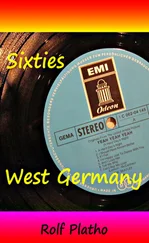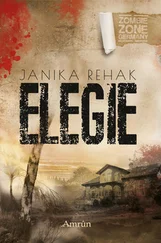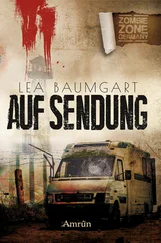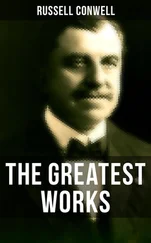Finally, in chapter 6, I turn back to German as a national language to ask what a quantum theory of translative linguistics might do to our conception of civic subjecthood informed and infused by a particular natural language. Drawing above all on Bakhtin’s writing on heteroglossia, Peirce’s on semiosis, and Adorno’s postwar work on foreign loan words in German, I interrogate the manner in which German may become ‘quantized’ by mobilizing the translative procedures always already at work in a living language.
Part 2 exemplifies these ideas of by offering four concrete case studies of quantum translation at work.
Chapter 7 reads W. G. Sebald’s Ringe des Saturn by laying bare the ambivalence of the trope of fragmentation that dominates the text both in its content and its form. At the level of content, fragmentation indexes the destruction of the natural world in the wake of the separative paradigm of the Enlightenment. At the level of form, however, Sebald’s fragmentary and associative compositional method employs collage to suggest secret connections between apparently disparate regions and epochs of a global history of catastrophe. Sebald’s project thus embraces the translative connectivity articulated in part 1 of the book. In order to imbricate these concepts with the specific work of interlingual translation, I focus upon Michael Hulse’s translation of Sebald’s translation of Joseph Conrad and a proto-Global South context to exemplify this ambivalent translation of generativity. The three levels of translation display a complex interplay of fidelity and infidelity, with Hulse often translating the original Conrad back into his English translation of Sebald. In this way, the work of translation restores—and sometimes invents—connections under historical conditions in which the distending and disruptive force of history appears to pull elements of the natural and human world further and further apart. The non-linear routes of faithful and apparently non-faithful rendition or transformation of texts thus make up a ‘quantum’ translation history that displays resilience in the face of historical destruction.
Chapter 8 examines the South African author Ivan Vladislavić’s novel Double Negative in its German translation of the same name by Leipzig-based translator Thomas Brückner. The chapter focuses upon a famous catchphrase from the postwar radio-play writer Günter Eich—‘ Seid Sand, nicht Öl, im Getriebe der Welt ’—in German in Vladislavić’s text, and the ways it shifts its valencies as it transits from English original to German translation, where it no longer figures as an ostentatious foreign body in the text. The chapter correlates this fluctuating form of translation with the valencies of political resistance and complicity that accrue to the literary work in two transitional (translational?) polities (pre- and post-1994 South Africa and pre- and post-reunification Germany respectively). At the same time, however, the ‘sand’ image that resides at the centre of the translative negotiations between resistance and complicity also figures the ‘enabling constraints’ that characterize both the transactions of quantum generativity and the compromises of interlingual translation.
Chapter 9 interrogates Australian poet John Kinsella’s ‘transversioning’ of Hölderlin, a German Romantic poet who often worked with translations from Greek Antiquity as his basal material, and was embarked upon the ceaseless ‘translation’ of his own work in an ongoing process of self-transformation. Kinsella, an Anglo-Australian poet of Irish provenance, writes from Noongar country in South-Western Australia, but is also an itinerant academic, having spent much time in Tübingen, the university city where Hölderlin spent the later part of his life. These stays inform Kinsella’s palimsestic ‘reversionings’ of Hölderlin filtered across Michael Hamburger’s English translations and infused with ecological issues from the Noongar country that is today’s severely degraded Western Australian wheat belt. Kinsella’s ‘reversionings’ stand in close dialogue with Hölderlin’s own poems-in-process and in particular with their subsequent translations and retranslations across a fifty-year period by Michael Hamburger. These poetic interventions are engaged in a close dialogue with their respective landscape contexts, all of them endangered by ecological destruction and the threat of ongoing wars, from the Napoleonic Wars to the current conflict in Syria and the European ‘war’ on refugees. Together, however, the constantly retranslated poems constitute a long process of incessant transformation that resonates with the environment’s deep-seated resilience and regenerativity.
Chapter 10 embarks upon a close reading of the temporal models proposed by the Congolese author Fiston Mwanza Mujila’s frenetic novel Tram 83 (2014). The reading suggests that Mujila provides a template for a temporal regime apposite for Global South polities in semi-institutional collapse, typical of the post-Structural Adjustment Policies (SAPs) and post-civil-war polities of some parts of Africa (Mujila is de facto describing post-2000 Democratic Republic of Congo [DRC] whence he hails). Mujila’s project mobilizes a form of temporal translation that is highly relevant not only for the post-apocalyptic polities of the Global South, but also for the pre-apocalyptic societies of the Global North, for whom, according to some readings, the South provides a grim future roadmap. The temporal template Mujila’s prose embodies is effectively and affectively very close to that described by quantum translation. In the light of this temporal template and its translative resonances, the chapter critiques the German translation of Tram 83 for the way it systematically undercuts Mujila’s project of temporal translation.
Part 3 of the book translates these concrete case studies into the even more concrete context of the translation classroom.
Chapter 11 opens the third part by turning to the practical business of literary translation under a double rubric: that of translation proper, and that of teaching (including the teaching of translation). It operates a transition between literary translation and the classroom by reading Klaus Martens’ German translation of Nobel Prize Winner Derek Walcott’s ‘The Morning Moon’, asking whether the German version succeeds in maintaining the English version’s insistence upon its participation in the Caribbean landscape it describes. The chapter shifts the focus of postcolonial poetics away from the contestatory ‘writing back’ of anti-imperial critique towards a Global South-based mode of immanent formal resonance between poetic devices and structures and the vibrant, self-generative continuum of the cosmos itself. Within the framework of a landscape ethos posited by numerous Caribbean theorists, the reading of Martens’ translation sketches a translative/pedagogical ethics that sees the role of creative, interpretative translation as the continuation the dynamics of natural creativity in which the poem ideally participates. The chapter opens part 3 with the coupling of translation and teaching, both of which can be understood as subgenres of the larger span of cosmic creativity discussed in part 1.
Chapter 12 returns to the classroom with a more narrowly linguistic perspective, focusing on language-teaching and -learning in the multilingual society that is today’s Germany. The chapter begins by analysing a recent provocation in the teaching of German, the pedagogical handbook Ausländisch für Deutsche , which turns the customary relationships between German and DaF ( Deutsch als Fremdsprache , i.e. German as a Foreign Language), and German and other Modern Languages inside-out, making German the peripheral rather than the core language of German school curricula; by the same token, it places German on the margins of the education system, automatically rendering it a linguistic-pedagogical ‘contact zone’ where translation is always already happening under the guise of ‘language awareness’. The chapter then turns to recent work by Anthony Pym to show that, at the micro-level of classroom interactions, translation has always been and continues be a vital part of pupils’ or students’ learning strategies—in particular in Germany. In this way, as in chapter 7, translation and teaching are placed alongside each other and shown to be not merely isomorphic to one another, as chapter 7 suggested, but in actual fact intimately entangled. In order to integrate this micro-analysis into the larger argument of the book, which posits that interlingual translation is a subset of cosmic transformation, the chapter finally looks as Rosa’s Resonanz (2016), a ‘sociology of worldly relationships’, for a model, albeit one that is only partly developed by Rosa himself, of the larger networks of translative encounters in which the classroom might be inserted.
Читать дальше












